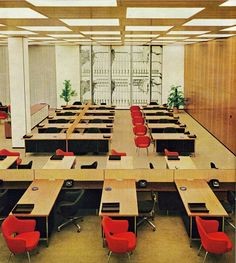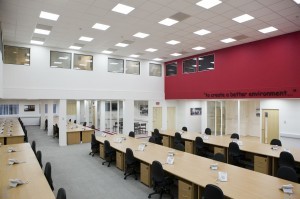I have talked in the past about the three internal organizational resources required for business success, and their trade-offs and interrelationships: Time, People and Money. The idea that if you have less time than desired to achieve a goal, it will require the expenditure of more people and more money to achieve it. If you have fewer people for the goal it will require more time and money. And so on.
I am now going to talk about the driving internal functional forces that are acting upon desired organizational goals. There are again three of them and to put them at their simplest, they are Sales, Finance and Engineering. I think in order to be a little more accurate it would be better to look at the conflicting goals of each of these functions with respect to the desired goal of the organization, instead of just the function itself.
The goal of sales is to get orders. There may be additional sub-requirements placed on them, but it is almost always quota attainment, as it pertains to orders, that is the measuring stick for sales. Achieve your sales order goal as a salesperson, and you get money, fame, glory, respect and most importantly, you get to keep your job. Fail to achieve your sales order goal and you don’t get the money, fame, glory or respect. More importantly, perhaps the first time you fail you may get a pass on keeping your job, but probably not the second time.
Sales in general doesn’t really care about finance or engineering. This is primarily because they are not paid to care about them. They are paid (usually in the form of commissions) to get orders. Sales usually wants the highest quality and lowest price possible as this helps enable their sales. The greater profitability desired by finance usually means a higher price, which usually makes sales more difficult. Sales will usually align with engineering on generating the highest quality solution but diverge when the costs of such solutions are taken into account.
The goal of Finance is margin or profitability. Again, there may be other sub-requirements, but finance’s primary role is to make sure that the organization brings in more money than it spends. Finance keeps score. It’s not enough to just bring in more than you spend. Finance quantifies how much more money needs to be brought in than is spent so that the business’s ongoing and future success can be assured. Future investments and corporate overheads (as well as salespeople’s salaries and commissions, etc.) have to be paid for.
Finance is usually focused on what could be called the margin percentage versus margin value balancing act. It is desirable to have a high margin percentage and high profitability on each sale. However, having high margins with low volumes will not generate enough profit to drive the business forward. Just as a high volume of sales with low margins will not generate the desired margin value. There is a desired financial equilibrium where both margin percentages and values are maximized.
The goal of Engineering is to make sure that everything gets done right. Engineering makes sure that products and solutions are configured properly. They make sure that components and solutions are available in the desired time frames. They make sure that services are costed and allocated correctly. In short, they make sure that the organization can in fact do whatever the salespeople are trying to sell.
Engineers are also believe that they are the primary group responsible for doing the people, time, money, analysis. Engineers are not usually interested in the sales aspect, other than recognizing if there are no sales there is no need for engineers. And they are not particularly focused on finances, as margin and profitability again have little direct effect on them. They are usually focused on the accuracy of the solution and will include whatever they deem appropriate (the people, time, money resources) to that solution to make it ever more accurate.
Of the three functions, sales is probably the most difficult. Sales is competing with external entities for each order, in addition to trying to balance the internal goals associated with the financial and engineering functions. Finance and engineering are only associated with internal functions, including sales. There is no competing engineering or finance function claiming that their financial wizardry or engineering prowess is superior. When they are forced to deal with external forces, it usually only through sales.
When these internal functions, and their associated goals are in balance, an organization can operate at near its peak efficiency. Sales pushes for orders, finance makes sure the sale is profitable and engineering makes sure that the sold solution is done correctly. Life can be good.
It is when an organization gets out of balance that we start to see significant issues. When an organization becomes too sales focused, margins and profitability can begin to slip as the quickest way to increase sales is to reduce price (this is just baseline economic theory). We saw an example of this some time ago when some stocks started being valued based on the assumptions of future sales and sales growth instead of the more standard stock and organizational valuation criteria. These stocks eventually came crashing down when it was realized that they would in fact have to start making money if they wanted to stay in business, regardless of how much they sold.
When an organization becomes too financially focused, growth, expansion and development can slow, again causing issues for the organization. Strategic opportunities can be missed because they may be deemed to either represent too much risk, or not enough return (margin) to be pursued. Being too safe from a financial point of view can be just as deadly to an organization as being too risky and focused only on sales.
With the increased global awareness and focus on the “cost of non-quality”, or more accurately the cost of not doing things right, there seems to now be an organizational drift toward becoming more engineering focused, since they are the organizational force associated with doing things right. I also think that this approach potentially has the greatest capacity for generating corporate issues in the future.
When an organization becomes engineering focused it has a tendency to lose sight of both sales and finance. With decreased input and parameter focus from sales and finance, engineering will continue to focus on accuracy and reducing the risk of an incorrectly engineered solution, almost to the point of trying to generate perfection in its solutions.
The issue here is that perfection usually comes at a very high cost.
Finance will continue to try to demand specific margin levels, while sales will want lower prices to enable the generation of orders. This is the recipe for the perfect organizational storm. Engineering generated increasing costs, finance generated desired margin levels, and sales generated reduced pricing demands to meet the market competition.
The point here is that the market, more or less, sets the market price for the organization’s goods or services. There can be some variations, sometimes based on the quality of your sales team, sometimes based on the quality of your solution, and sometimes it is based on other factors (such as the regulatory exclusion of a competitor from the market, etc.). If you raise your prices too much in response to the engineered increase in costs, sales volumes and hence margin values will decline. If you reduce margin percentages, again margin values can decline. This can become a lose-lose situation.
The organization won’t make any mistakes, but it may not generate enough business, or margins to survive for very long.
In allowing an organization to become engineering focused, you start down the road to becoming a cost-up pricing organization. This is the least market responsive type of organization. Since engineering nominally has no focus or interest in sales or margin, when an organization becomes engineering focused, it becomes almost entirely internally focused.
It is usually the position of the market that an organization that loses its focus on the customer or the market, doesn’t get to enjoy the benefits of that customer or market for very long.
Engineering in an organization is about reducing the risk associated with achieving a goal. But like everything else, this risk avoidance comes with a cost. It is not enough to tell engineering to make sure that the solution is correct. This direction invariably leads to the inclusion of all kinds of failure avoidance constructs, and their costs to be included in the solution. And since engineering can be a complex function, there are few outside of the engineering function that can understand or question it.
In the long past world of “Five Nines” of reliability, this was once the recipe for success, but in today’s “short life-cycle” disposable product world, few can afford it, and even fewer are willing to pay for it.
I mentioned earlier that engineers see themselves as the group that is responsible for solving the Time, Money, People resource equation. It is obvious that when none of these parameters are set, the solution is much easier to obtain. And without limits to these parameters, the costs of the risk-adverse solution can grow quite large. Organizations need to understand that the Time, Money, People equation requires parameters to be set. Time frames and budgets need to always be set before being handed to engineers to configure a solution.
Engineering is a key component to any solution. The functional internal conflicts between sales, finance and engineering will always come into play, and must always be balanced out. As organizations seem to continue to drift into a little more of an engineering-centric approach to customers and solutions, it should be safe to assume that left unchecked, the commercial and financial aspects of these solutions will re-emerge in the customer decision making process.
It is safe to say that you do indeed get what you pay for, but it is also safe to say that sales will have difficulty selling, and customers are probably not going to be willing to pay for an over-engineered solution of any type that does not take into account their commercial needs.


